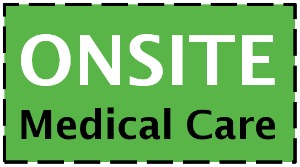PATTY MURPHY
HNI Health Systems Consultant
Onsite care started out as a way for large manufacturers to treat work injuries. More recently, onsite clinics have been used to manage health costs and to increase productivity among employees of many types of employers. Like concierge medicine and private health exchanges, onsite care clinics support the idea that healthy employees help control employer health care costs.
way for large manufacturers to treat work injuries. More recently, onsite clinics have been used to manage health costs and to increase productivity among employees of many types of employers. Like concierge medicine and private health exchanges, onsite care clinics support the idea that healthy employees help control employer health care costs.
The design of onsite facilities can run the gamut, depending on what they are intended to accomplish. Here's a overview of how an onsite care clinic might be structured.
Who's on Staff at Onsite Care Clinics?
Onsite health clinics can be staffed by physicians, nurse practitioners, or other health advocates, depending on what fits the company and its employee population the best. Employers can hire their own providers directly, or use a third-party companies like ModernMed, Concentra, or Medcor to staff their facility.
Many employers who use a third party do so because of limited expertise around implementing an onsite clinic and the promise of a “turnkey” solution. Whatever the approach, it is important to select providers that have experience working with a group similar to your company’s demographics and that you feel will interact well with your employee population.
Onsite Care Services
Services offered may include primary care, wellness screenings and immunizations, physical therapy, behavioral health, administration of tobacco cessation programs, and personalized health coaching plans. Caregivers also might offer seminars or webinars to the organization on things like disease management, health awareness, or stress reduction designed to impact prevention and overall wellbeing.
Many onsite health programs also help employees manage chronic conditions by providing onsite treatment, coaching, and monitoring. High blood pressure, arthritis, and diabetes are a few examples of such conditions that could be managed in an onsite clinic.
According to the Towers Watson 2012 Onsite Health Center Survey, of the surveyed employers:
- 81% offer biometric screenings
- 73% offer wellness counseling
- 70% offer urgent care and first-responder services
- 63% offer primary care services
The proximity and convenience of onsite medical care is intended to increase the likelihood that employees will see a provider for medical needs. They can visit the clinic on their lunch break to get a flu shot or be treated for a minor illness such as a sore throat, rather than taking time off to visit an offsite doctor, or worse, rack up unnecessary and costly emergency room visits.
Exploring Shared Resource Arrangements
As more mid-sized companies have developed an interest in onsite care, a host of creative resource-sharing arrangements have been developed. It is becoming a growing trend for smaller or mid-sized firms to establish shared near-site care facilities.
An employer with an existing onsite clinic may choose to open its doors to neighboring businesses to offset its costs, or neighboring employers may band together to offer this benefit to their employees. In some cases, a landlord or property manager has driven this initiative for tenants in an office park or office building with multiple businesses.
Employers also may consider offering care to their employees part time, but sharing the physician with other businesses or using a mobile clinic. Whatever a company’s unique situation, strategies exist to “right size” the onsite approach to its needs.
There are many ways to design an onsite care clinic to meet your employees' needs. What custom elements have you used in designing your onsite care program? Please share in comments below!
Related Posts:
Take that Wellness Program Off Autopilot! 6 Tips to Shake Things Up
Final Rules for Wellness Programs Under Health Care Reform Released
.png?width=69&height=53&name=Acrisure%20Logo%20(White%20Horizontal).png)

![[ GET THE WHITE PAPER ] Is Onsite Medical Care a Fit for Your Company?](https://no-cache.hubspot.com/cta/default/38664/63e929b1-f253-41ac-998a-d1e8688b659b.png)
